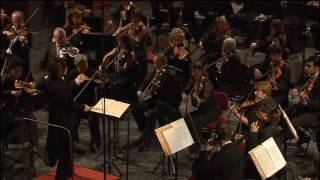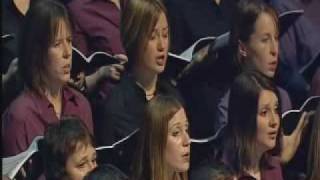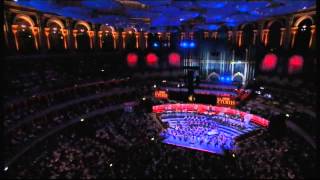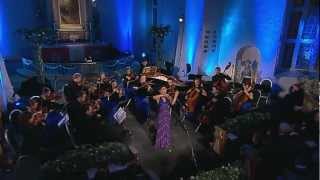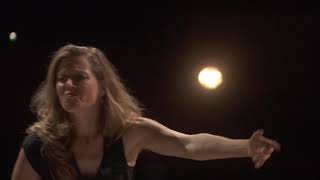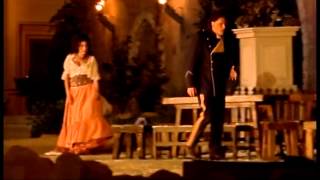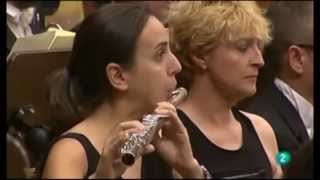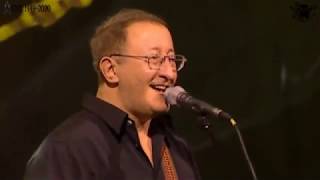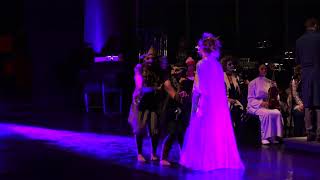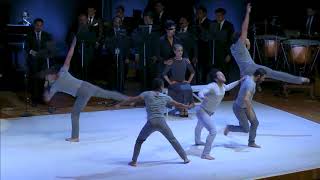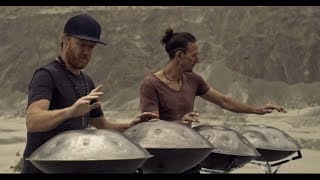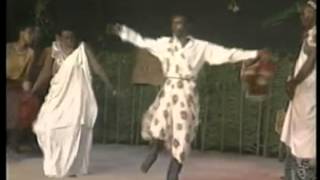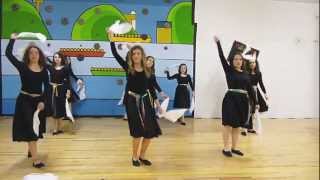Recommended music videos for initiation to classical music
Johann Sebastian Bach (1685-1750) was a German violinist, organist, conductor and composer; He was born in Eisenach into the most prominent musical family in history with more than 30 famous composers within it. In 1703 he obtained his first job as a court musician for the Prince of Arndstat and in 1707 he moved to Mülhausen as an organist, where he married his cousin Maria Barbara with whom he had seven children. After the death of his wife in 1720, he remarried after a year and a half to María Magdalena with whom he would have another thirteen children. In 1723 he moved to Leipzig where he would reside until his death at the age of 65. A prolific composer, he is considered one of the main three geniuses in the History of Music along with Mozart and Beethoven.
Sicilian (also known as sicilienne in French) is a musical form that became popular throughout Europe between the late 17th century and the 18th century . It is a slow dance that takes place in a time signature of 6/8 or 12/8 and is characterized by the presence of a trochaic rhythm , as well as by its simple melodies and clear harmonies and is usually written in a minor mode. It is a dance similar to the jig in terms of rhythm but much slower and with a melancholic character.
Today we offer the second movement, Siciliana , from JS Bach 's Eb major sonata (BWV 1031) for flute and harpsichord with Pete Lilla on flute.
Johannes Brahms (1833-1897), born in Vienna , where he spent most of his life, was the composer of the most conservative romanticism compared to the progressive current led by Liszt and Wagner . His music is firmly rooted in the compositional structures and techniques of the classical masters and his formal structures faithfully follow the patterns of classicism, although he uses some of the color of romanticism and popular music. Eminently perfectionist in nature, he wrote for piano, chamber ensembles, symphony orchestra, for solo voices and for choir. It was Hans von Bulow who proposed the “three Bs” referring to Bach , Beethoven and Brahms as the three main pillars of the History of music.
Brahms' Hungarian Dances are a set of twenty-one cheerful dances, mostly based on Hungarian themes, composed in 1869, although dances 11, 14 and 16 are original; Its duration ranges between one and four minutes. Brahms originally composed them for four-hand piano, and later arranged ten of them for solo piano, and a few others (numbers 1, 3 and 10) for orchestra. Various composers have orchestrated the rest; especially, Antonín Dvořák , who, on the other hand, was inspired by them to compose his series of Slavic Dances .
Today we offer Dance No. 1 conducted by the Japanese teacher Tomomi Nishimoto (1970) who has conducted numerous important European orchestras.
Karl Jenkins (1944) is a British composer and musician born in Gower , Wales . His father, an organist and choir director, gave him his first musical instruction. He continued his musical studies at University College Cardiff and the Royal Academy of Music and was known as a jazz and rock musician; Perhaps his most famous piece is the classic theme used by the diamond company De Beers for its television advertising campaign. He later included it as the title piece in a compilation of various works he called Diamond Music and eventually created Palladio , using it as the theme of the first movement. The Adiemus theme is also well known , used in an advertisement for the airline Delta Airlines , and whose success led Jenkins to decide to create the Adiemus project.
The Armed Man: A Mass for Peace is a work by Karl Jenkins commissioned for the millennium celebrations in 2000, and was dedicated to the victims of the Kosovo crisis. It is essentially an anti-war work that is based primarily on the Catholic mass and written for SATB choir with soloists (soprano and narrator) and symphony orchestra; In addition to ordinary excerpts from the mass, the text incorporates words from other sources including the Islamic Call to Prayer, the Bible , and the Mahabharata . Writers whose words appear in the composition include Rudyard Kipling, Alfred Tennyson , and Sankichi Toge , who survived the bombing of Hiroshima .
Today we offer the Sanctus of the aforementioned Mass performed by the Welsh National Opera Orchestra and four Welsh choirs, conducted by Jenkins himself.
John Williams (1932) is an American composer, conductor, pianist and trombonist, considered one of the most prolific composers of soundtracks in the history of cinema; He has composed some of the most famous and recognizable of all time such as: Star Wars, Harry Potter, Jaws, ''Catch Me If You Can''. ET, Superman, Indiana Jones, Jurassic Park, Schindler's List, Home Alone and others. He has also made musical compositions for various Olympic Games , numerous television series, newscasts and several concert works . He has won the Oscar five times and has 52 nominations to his credit, establishing him as the second man with the most nominations for the highest award in the cinema after Walt Disney .
Superman . One of the most important elements of the first Superman film lay in John Williams ' music. In just 5 minutes and 29 minutes, the composer's main piece was established at the top not only of the music associated with superheroes, but also in particular of what has been done in this field in the history of cinema. In fact, the fanfare that accompanies the opening credits curtain is something so significant that it was forever associated with the idea of how magnanimous and affectionate the hero with the S on his chest must be. Perhaps the most important thing is revealed when listening to the piece again today. There it becomes clear that the power of that music, and the way in which it manages to identify with the very essence of the character, is something unrepeatable.
Recommended classical music videos
Giuseppe Tartini (1692-1770) was an Italian virtuoso violinist and composer who was born in Piran , then the Republic of Venice and today Slovenia . He had an eventful youth because after marrying his beloved Elisabetta Premazore, he was accused of having kidnapped her, so she was interned in a convent while he fled; After wandering from one place to another, he found refuge in the Convent of San Francisco , in Assisi , where he deepened his studies and violin technique; After a few years he managed to reunite with Elisabetta and work as a violinist in the Ancona theater. In 1726 he moved permanently to Padua where he was hired by the Basilica of San Antonio and two years later he created the Scuola delle Nazioni for violin, attended by instrumentalists from all over Europe .
The Sonata was originally a composition written to be played or "sounded" by one or more musical instruments, as the cantata was to be "sung" by one or more voices. Beginning with classicism (1750-1810), its definition adjusts to a work generally structured in three movements (fast-slow-fast) and sometimes four, with or without a short introduction. It should not be confused with the sonata form , which is a compositional model that consists of three sections without interruption: a) exposition of the two main and contrasting themes, b) development of both themes, c) reexposition or recapitulation. Sonata form is typically applied to the first movements of sonatas, quartets, symphonies, and concertos .
The Devil's Sonata , or “The Devil's Trill”, sonata for violin in G minor, was written by Tartini for violin and basso continuo; although today we offer it arranged for solo violin and string orchestra. Written in the Baroque era, its formal structure does not conform, of course, to the later rules of classicism; although the alternation of “slow-fast” and the soloist's cadenza can already be seen shortly before the final bars. Its name comes from the technical difficulty that its interpretation required for the time in which it was written and which is offered to us today by the Korean violinist Soyoung Yoon (1984), winner of important international competitions.
The Austrian composer Franz Joseph Haydn (1732-1809), whose brother Michael Haydn was also a notable composer, was one of the main pillars on which classicism (1750-1820) was based. At the age of six he began his musical studies of harpsichord and violin. At the age of eight he was admitted as a choralist at St. Stephen's Cathedral in Vienna where he continued his studies in singing, piano and violin. After changing his voice, he had to survive by working multiple jobs, while studying composition analyzing the works of Carl Philipp Emanuel Bach . He maintained a close friendship with Mozart and was Beethoven 's teacher. He laid the main foundations of the sonata form and the formal structure of the string quartet and the symphony. He died at the age of 77 in Vienna .
Sturm und Drang (storm and assault) is a term that does not come from music but from literature; understood this term as a reaction against the Baroque . In music, the polyphonic structure and speculation or mathematical symbolism are criticized, the formulas that do not allow an adequate and simple expression, the objective, rational and understandable method. It changes from the conception of the term affect (in the objective sense of the Baroque ) to the term feeling (in the subjective sense of the StudD ). In Sturm und Drang the origin of music is sought in the inner nature of man; Now it is no longer just vocal music capable of expressing something through words, now instrumental music itself is also capable of expressing itself.
Symphony No. 49 was written in 1768 by Joseph Haydn . Its nickname "The Passion" is believed to come directly from the musical characteristics of the composition: structure of the archaic Sinfonia da Chiesa (slow, fast, slow, fast) , in minor mode and association with the Sturm und Drang period of the author. According to HC Robbins Landon it is a work of "dark colors, somber, and even tragic." The symphony is made up of four movements: I (0'00'') ADAGIO .-. II (11´39´´) ALLEGRO DI MOLTO .-. III (18´47´´) MENUET AND TRIO .-. IV (24'02'') FINALE. PRESTO. Today it is offered to us by the Orchester philharmonique de Radio France conducted by the Canadian teacher Barbara Hannigan .
Georges Bizet (1838-1875) was a French pianist and composer who did not have many successes during his lifetime. Bizet won several awards throughout his brilliant career as a student at the Paris Conservatoire , including the prestigious Prix de Rome in 1857. He was recognized as an exceptional pianist, although he preferred not to take advantage of his skill and rarely played in public. His best-known opera, Carmen , achieved sensational success at its premiere that he did not enjoy as he died three months later of a heart attack at the age of 39. The rest of his works were cornered and rescued little by little in the 20th century. Despite this, he is currently considered a reference of the 19th century and a brilliant and imaginative composer.
Carmen is a dramatic opera in four acts with music by Georges Bizet and a French libretto by Ludovic Halévy and Henri Meilhac , based on the novel Carmen by Prosper Mérimée ; The action takes place in Seville in 1820, starring a beautiful and impulsive gypsy with a strong character.
Today it is offered to us by Nadia Krasteva , in the role of Carmen with Aleksandrs Antonenko, Sebastian Holecek, Asa Elmgren ... and the Choir and Orchestra of the Nationaltheater Brüun , all conducted by the Austrian maestro Ernst Märzendorfer (1921-2009) .
Ángel Illarramendi Larrañaga (1958) is a Basque musician and composer, born in Zarautz , Gipuzkoa; He studied harmony, counterpoint, fugue and composition with Francisco Escudero . His main work has focused on the field of cinematography and theater with notable soundtracks for films such as Tasio (1984) by Montxo Armendáriz , The Son of the Bride , by Juan José Campanella ; Teresa, the Body of Christ by Ray Loriga , Arlecchino, il servitore di due Padroni, by Goldoni , or The Trojan Women by Euripides . He has also collaborated with a wide cast of film directors such as Gracia Querejeta, Pedro Olea, Helena Taberna, Anjel Lertxundi, Albert Boadella, Héctor Olivera, Antonio Hernández or Manuel Gutiérrez Aragón , highlighting his intense collaboration with the producer Elías Querejeta . He is also the author of several chamber works, seven Symphonies , a Concerto for clarinet, piano, viola and orchestra , two symphonic poems, a chamber opera, a suite for orchestra...
Today we offer the suite from the soundtrack of the film 'The Bride's Son' by Juan José Campanella composed by Ángel Illarramendi performed by the RTVE Orchestra directed by maestro Juan José García Caffi
Recommended music videos for all tastes
Lizz Wright (1980) is an American jazz singer-songwriter. He was born in the state of Georgia ; His father was a preacher and his mother sang gospel at mass. He has two brothers with whom he formed a vocal trio that accompanied his father in church. He studied voice at Georgia State University in Atlanta and later in New York and Vancouver . According to The New York Times , she is the heir to a "direct line that runs from Odetta to Tracy Chapman ," singers whose primary source is the African-American spiritual tradition. Regarding her vocal style, it is not simply a question of wealth. of his tone of voice or his unparalleled control; but of the sensitivity and insight that he shows through all his interpretations.
Idir (1945 - 2020) was an Algerian singer, considered one of the greatest exponents of Amazig or Berber music. The son of a shepherd, he was born in Ait Lahcène , in Kabylia , eastern Algeria. He studied geology but his career ended up leading to music. In 1973 he visited Radio Alger by chance to do a substitution and his song in Berber V vava Inouv a was played and began to become famous. In 1975 he settled in Paris to record his first album, published the following year, with the Pathé Marconi record company. In 1999 he presented his new album " Identités " demanding dialogue and brotherhood between peoples. Relations with the Algerian regime were not easy because of its Amazigh identity claim. He died in Paris on May 2, 2020.
Gloria Gaynor (1943) is an American disco and soul singer. His best-known hits are " Never Can Say Goodbye " (1974), " I Will Survive " (1978) and " I Am What I Am " (1983). He was born on September 7, 1943 in Newark , a city in the state of New Jersey . Their first single was released in 1965 under the title " She'll Be Sorry / Let Me Go, Baby ". For the first time, the lyrics of a song are written from the point of view of a woman, attacking her ex-lover that she is now free and can move on without him. The song became an anthem of women's liberation and continues to play strongly in clubs and karaoke today. Gloria Gaynor leads hit after hit and becomes the queen of the dance floor for 20 years and Europe surrenders to her.
David Bisbal (1979) is a Spanish singer, composer and actor, born in Almería , who achieved popularity in 2001, after his participation in the first edition of Operación Triunfo , where he won second prize and overwhelming fame. Its total sales are estimated at more than 6 million copies (albums, singles, compilations and live recordings). According to the Spanish Music Producers (Promusicae), David Bisbal has more than 60 platinum albums (of which 42 correspond to studio albums with sales of more than three million units sold). He currently lives in Madrid , with Almería being his second residence.
Recommended peculiar videos
Edvard Grieg (1843-1907) was a Norwegian composer and pianist, considered one of the main representatives of musical romanticism. His mother, Gesine , was his first piano teacher; Later, she met the legendary Norwegian violinist Ole Bull , a family friend and her mother's brother-in-law. Grieg adapted many themes and songs from his country's folklore, thus contributing to creating a Norwegian national identity, just as Jean Sibelius did in Finland or Antonín Dvořák in Bohemia . His most important works are: the Piano Concerto in A minor , the intimate Lyrical Pieces (for piano), the Holberg Suite (for string orchestra) and, especially, Peer Gynt, incidental music that he wrote at the request of the writer Henrik Ibsen for his homonymous drama.
The Lyric Suite is an orchestration of four of the six piano pieces from Book V of Grieg 's Lyric Pieces , Op. 54. The orchestration is by Anton Seidl and Grieg . It consists of three pieces revised by Grieg based on Seidl's arrangements, and one piece arranged by Grieg alone.
Today we offer one of the movements from this Suite, the Trool March , choreographed by Rebekah Wainwright for the St. George Dance Company of Utah.
Igor Stravinsky (1882-1971) was a Russian pianist, conductor and composer; For many critics, the most important of the 20th century . In his long life he composed a large number of works addressing various styles such as primitivism , neoclassicism and serialism . Eventually, Stravinsky 's musical future was guided by Sergei Diaghilev , director of the Ballets Russes in Paris , who hired Stravinsky to write a ballet for his company, which would be The Firebird ; Stravinsky left Russia for the first time in 1910, to attend its premiere in Paris by the Ballets Russes . During his stay in that city, he composed two more works for the Russian Ballets : Petrushka (1911) and The Rite of Spring (1913). According to Time magazine, he was one of the most influential personalities of the 20th century .
Les Noces (in Spanish, Las Bodas ; in Russian, Свадебка, Svádebka ) is a danced cantata or ballet with soloists to music by Igor Stravinsky . As a ballet it premiered on June 13, 1923 at the Théâtre de la Gaîté in Paris , by the Ballets Russes . Stravinsky first conceived of writing this cantata in 1913 and completed it in an abbreviated score by October 1917. During the long gestation period, the orchestration changed drastically; initially conceived for an expanded symphony orchestra; Due to various incidents, he ended up establishing the following ensemble: soprano, mezzo-soprano, tenor, and bass soloists, mixed choir and two groups of percussion instruments, including four pianos.
The version that we offer today is made by UNAM (National Autonomous University of Mexico) with Christian Gohmer , as musical director.
The Hang is a melodic percussion instrument made up of a hollow piece of spheroid metal, with dents on its surface of different shapes and sizes that, when struck with the hands, produce different notes and musical scales. The structure of the hang has a characteristic “flying saucer” shape, the result of gluing two nitrided “shells” (a process that modifies the composition of the metal by adding nitrogen, resulting in an increase in the surface hardness of the pieces) on its edges. Inside the instrument there is a void that acts as a resonance box, while the outer face has various harmonic ornaments or sculpted membranes, produced by hammer blows. These membranes are normally excited using fingers, which are dynamic and rich in harmonics without using any additional force. It was developed in May 1999 by Felix Rohner and Sabina Schärer at the Panart company in Bern , Switzerland.
Today we suggest viewing a little fantasy performed by the duo Hang Massive composed of Danny Cudd and Markus Offbeat .
The expression African Dance refers to numerous types of African dances that occur in the portion of Africa south of the Sahara .; dances closely related to musical traditions, the concept of polyrhythm and total articulation of the body; dances that interpret social patterns and values that help people to work, mature, pray and criticize members of the community while contributing to the celebration of festivals and funerals and an approach to the gods, promoting, in general, the participation of spectators in the same artistic expression. Traditional dance in Africa is an element that expresses the life of the community more than that of individuals or couples.
The Higa Club is made up of a group of active members who dance all types of traditional Burundian dances. Today they offer us one of those dances, Honga ndore .
Recommended music videos for children
Various Wikipedia articles have been used to write these texts.
The texts of Videomusicalis are written in Basque, Spanish and English.






